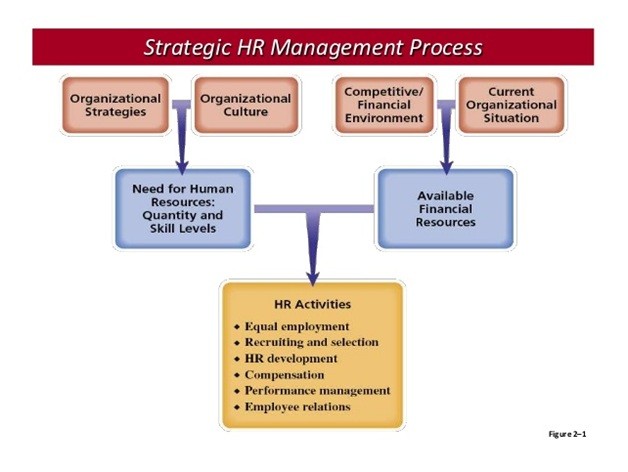
SHRM is the proactive management of employees in an organization or company. SHRM includes typical human resource components such as hiring, discipline, and payroll, but also involves working with employees in a collaborative manner to boost retention, improve the quality of the work experience, and maximize the mutual benefit of employment for both the employee and the employer.
SHRM connects the strategic goals of the company to Human Resource management. It needs to be adapted within all hierarchies, and it should be accepted and used as a part of the daily work of the line managers.
Recent research done by the Boston Consultancy Group showed the difference that effective SHRM can make. Companies that have efficient and skilled HR practices have 3.5 times the revenue growth and 2.1 times the profit margins compared to less capable companies. The highest correlation was found in the following areas:
• Employee retention.
• Employer branding.
• Leadership development.
• Onboarding of newly hired employees.
• Performance management and rewards.
• Recruiting.
• Talent management.
An example of a company that has a successful SHRM policy is the Swedish company Ikea. It is listed in the Fortunes Best Companies to work for. Ikea has an innovative SHRM that has build a culture promoting diversity and creativity. The industry is characterized by a high turnover but due to the employee friendly policy, Ikea has become a preferred employer in the retail sector. Workers who master their current job are being encouraged to seek new challenges, change their job scope or location.
SHRM is relevant for every company no matter how big or how small. Implementation of SHRM policy is key. Bigger companies usually choose to setup an HR department, whereas smaller companies sometimes prefer to hire an external agency to develop an SHRM policy. Also, the sector the company is active in plays a role. If hiring the right skilled people is difficult, there is more attention needed for the recruitment process.
A good example where SHRM is useful is for companies in the IT market. Technology and knowledge of the latest IT development plays a significant role. Skilled programmers are difficult to find and recruit,and even more difficult to keep in the long term;and they are aware of their position on the labour market. A well-implemented SHRM policy would have a company be ahead or at least be up-to-date with the latest technological developments. This would mean investing in the education of current employees, and keeping them satisfied. It would also mean having the necessary hardware and facilities. Such measures may prove attractive to potential programmers.
Finally, anSHRM policy can only be successful if it is implemented within all layers of the company.

Irene Wagenaar
Photo credits: Designed by Kjpargeter / Freepik
